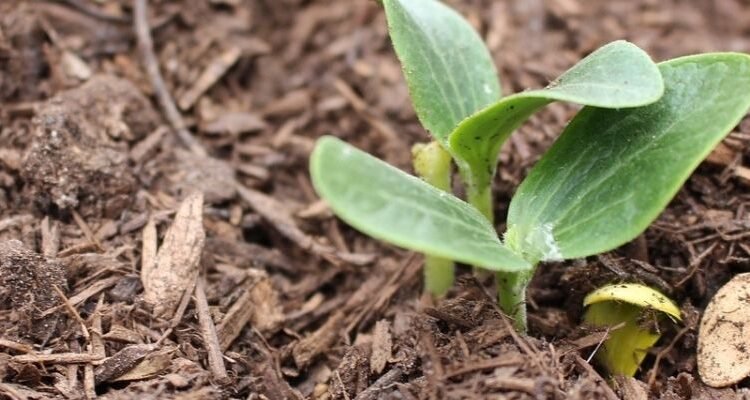If you want to turn your property into a productive space, then soil health is one of the top factors you should be conscious of.
When your soil is healthy, it helps conserve biodiversity, mitigate environmental challenges, and maintain ecosystems.
By promoting and maintaining soil health on your land, you’ll ensure your ability to sustain agriculture and promote an overall healthy environment for all inhabitants.
1. What is soil health?
Soil health is the overall condition and well-being of soil as a living ecosystem.
It includes the physical, chemical, and biological properties of soil that enable it to function effectively to support plant growth, maintain water and nutrient cycles, and provide habitat for various organisms.
Healthy soil is critical for sustainable agriculture, biodiversity, water management, and climate change mitigation.
We’ll review each of these categories below and discuss how soil health impacts the environment overall.
2. Why is soil health important?
Soil health is critical for 10 core reasons.
![]()
![]() Sustainable agriculture and land management
Sustainable agriculture and land management
When you maintain soil health, you ensure that the soil has the essential nutrients and the physical structure that is necessary for optimal plant growth.
This ensures you can continue to produce nutritious food repeatedly.
If you don’t prioritize soil health, you can’t hope to keep your land viable for use — whether in agriculture, forestry, urban development, or conservation — for years to come.
Soil is home to both microorganisms and larger organisms that form complex food webs.
When you keep soil healthy, you contribute to processes like nutrient cycling, plant symbiosis, and disease suppression, which improves the overall biodiversity of an area.
![]()
![]() Water regulation
Water regulation
Healthy soils can absorb and retain water which reduces runoff, helps recharge groundwater, and mitigates the risk of flooding.
Think of soil as a sponge that prevents water-related disasters and ensures a stable water supply in a given ecosystem.
Soil is one of the largest carbon sinks available on the planet, which means it can absorb carbon dioxide from the atmosphere.
When soil is healthy, it is rich in organic matter and stores significant amounts of carbon dioxide.
As a result, maintaining healthy soil should be a priority for every landowner.ryty
![]()
![]() Erosion prevention
Erosion prevention
Soil erosion can be detrimental to plant growth.
Healthy soils have systems in place to help prevent the loss of fertile topsoil through erosion.
For instance, these soils will often have the proper structure and cover vegetation to make the topsoil more resilient.
![]()
![]() Nutrient cycling and fertility
Nutrient cycling and fertility
Organic matter is an important component of what keeps soil healthy.
However, this matter must be broken down over time.
Microorganisms in the soil help with this process and release nutrients in forms that plants can absorb.
This process is called nutrient cycling, and it promotes soil fertility.
![]()
![]() Disease and pest management
Disease and pest management
A healthy and diverse soil ecosystem helps to suppress certain plant diseases and pests by promoting beneficial microorganisms that compete with harmful ones or directly inhibit their growth.
![]()
![]() Human health and livelihoods
Human health and livelihoods
When land has healthy soil, it can be used for agriculture.
Agriculture produces nutrient-rich foods that not only sustain human beings but also provide a livelihood via the agricultural industry.
Agriculture is a top industry for many countries and economies around the world.
Protecting soil, a key component of agriculture’s success, is the first step to ensuring that humans can grow food and earn a living.
![]()
![]() Environmental stewardship
Environmental stewardship
As a landowner, it is up to you to safeguard the planet’s resources for generations to come.
The soil is one of the resources that you should be careful to mind, so the land can be used for agriculture, forestry, urban development, and conservation for generations.
![]()
![]() Resilience to climate extremes
Resilience to climate extremes
When soil has a strong structure, it can better withstand extreme weather events like droughts and heavy rainfall.
3. What are the key components?
Here are the key components of soil health:
![]()
![]() Physical structure
Physical structure
A well-structured composition is a necessity for healthy soil.
Good soil structure prevents compaction, erosion, and waterlogging while allowing for proper air and water movement.
If the soil is not physically well-structured, then it can inhibit plant root growth as well as nutrient uptake.
![]()
![]() Chemical composition
Chemical composition
In addition to physical structure, chemical composition is an important aspect of soil health.
You should monitor your soil for a balanced nutrient content and pH level.
How do you know if your soil is “balanced”?
You’ll want to see essential elements like nitrogen, phosphorus, and potassium present in the soil as these are necessary for plant growth.
As for the pH of the soil, this affects nutrient availability and microbial activity.
![]()
![]() Biological diversity
Biological diversity
Soil isn’t just dirt where plants grow.
It hosts a diverse array of microorganisms such as bacteria, fungi, protozoa, earthworms, nematodes, and more.
These tiny organisms are essential for processes like nutrient cycling, organic matter decomposition, disease suppression, and an overall healthy ecosystem.
![]()
![]() Organic matter content
Organic matter content
Soil is composed of organic matter content such as decomposed plants and animal material.
The presence of organic matter helps to improve soil structure, water retention, and nutrient availability.
Another benefit of organic matter content is that it acts as a reservoir of carbon.
This helps to mitigate climate change by sequestering carbon dioxide from the atmosphere.
![]()
![]() Water management
Water management
Healthy soil absorbs and retains water without excess.
The soil’s ability to drain away extra water prevents flooding and supports plant growth during dry periods.
Proper water management also contributes to groundwater recharge.
![]()
![]() Erosion control
Erosion control
When soil has the right structure and vegetative cover, it resists erosion caused by wind and water.
Erosion prevention is critical because it helps to conserve fertile topsoil and prevent sediment from entering water bodies.
![]()
![]() Microbial activity
Microbial activity
Microorganisms that live in soil help to break down organic matter, release nutrients, and create a balanced ecosystem that helps suppress pests and diseases.
Without microbials, this activity wouldn’t be possible.
4. How does it impact agriculture and food production?
Soil health has an integral role in agriculture and food production.
It helps determine the quality, quantity, and sustainability of the crops.
Here are 5 specific ways soil health will impact agriculture and food production.
![]()
![]() First, soil health impacts nutrient availability.
First, soil health impacts nutrient availability.
This is probably the most obvious because healthy soils will contain nutrients that they pass onto the plants and crops that they grow.
By ensuring that soil is healthy, you ensure plants have access to the nutrients they need for robust growth.
Essential nutrients that soil should contain include nitrogen, phosphorus, and potassium.
![]()
![]() Another way that soil health can impact agriculture and food production is root growth and plant uptake.
Another way that soil health can impact agriculture and food production is root growth and plant uptake.
When the soil is well-structured, plants can more easily penetrate and spread.
Ultimately, this means that plants have greater access to water and nutrients, which will make them healthier in the long term.
![]()
![]() Next, having healthy soil can create a more stable environment for plant growth.
Next, having healthy soil can create a more stable environment for plant growth.
This stability creates more consistent crop yields and reduces variability caused by factors like weather fluctuations and pest pressures.
![]()
![]() Additionally, these increased crop yields typically have a positive impact on farmers’ income and livelihoods.
Additionally, these increased crop yields typically have a positive impact on farmers’ income and livelihoods.
With improved yields, farmers can contribute to economic stability in rural communities and enhance global food security.
![]()
![]() Finally, farmers who prioritize soil health are more likely to adopt sustainable practices such as cover cropping, crop rotation, reduced tillage, and integrated pest management.
Finally, farmers who prioritize soil health are more likely to adopt sustainable practices such as cover cropping, crop rotation, reduced tillage, and integrated pest management.
Not only do these practices help to enhance the health of the soil, but they also promote long-term agricultural sustainability.
Sustainable practices should always be prioritized especially if you intend to use your land season after season.
5. What role does soil health play in biodiversity conservation?
Healthy soils provide habitats, nutrients, and support for various organisms.
Soil houses everything from microorganisms and larger animals, and when soil thrives, so do the organisms that reside there.
When soil is healthy, it fosters an ecosystem that provides habitat, nutrients, and symbiotic relationships that promote the growth of microorganisms, plants, insects, etc.
Having a wide variety of soil-dwelling creatures enhances nutrient cycling, disease resistance, and ecosystem resilience.
This enables terrestrial ecosystems to become more stable and sustainable.
By maintaining soil health, you help preserve the intricate web of life that exists within the soil.
This safeguards global biodiversity and helps us continue the ultimate goal of environmental conservation.
6. How does soil health affect water quality and availability?
Soil impacts water quality and availability by regulating the movement and filtration of water.
When soil is healthy, it has proper structure.
The organic matter will act like a sponge and allow rainwater to infiltrate it.
Once the water is in the soil, it will be stored for future plant use or groundwater recharge.
The absorption of water into the soil prevents surface runoff and reduces the risk of flooding.
Soil also acts as an important filter for water.
As water moves through the soil, soil particles and microorganisms remove pollutants and impurities.
This helps to improve water quality.
As a landowner, you have the important role of soil management.
When done properly, this will allow you to sustain your water resource, prevent erosion of the soil, and ensure a clean and reliable water supply.
7. Can soil health contribute to climate change mitigation?
Yes, absolutely!
As noted above, healthy soils are carbon sinks, which means they store substantial amounts of carbon dioxide from the atmosphere.
Additionally, the organic matter in soil is derived from decomposed plant and animal materials.
This organic matter contains carbon that remains sequestered in the soil for long periods.
Practices that enhance soil health like cover cropping, reduced tillage, and using organic matter help to increase soil’s ability to store carbon.
All of these factors combined help to mitigate the release of carbon dioxide and combat climate change overall.
8. What are indicators of soil health?
![]()
![]() Soil organic matter: Indicates nutrient availability and carbon sequestration potential
Soil organic matter: Indicates nutrient availability and carbon sequestration potential
![]()
![]() Microbial diversity: Reflects the soil’s biological activity and nutrient cycling capacity
Microbial diversity: Reflects the soil’s biological activity and nutrient cycling capacity
![]()
![]() Soil structure: Assesses compaction, drainage, and root penetration
Soil structure: Assesses compaction, drainage, and root penetration
![]()
![]() Nutrient levels: Measures essential elements like nitrogen, phosphorus, and potassium
Nutrient levels: Measures essential elements like nitrogen, phosphorus, and potassium
![]()
![]() pH balance: Affects nutrient availability and microbial activity
pH balance: Affects nutrient availability and microbial activity
![]()
![]() Water infiltration rate: Indicates soil’s ability to absorb water
Water infiltration rate: Indicates soil’s ability to absorb water
![]()
![]() Erosion resistance: Measures soil’s susceptibility to erosion
Erosion resistance: Measures soil’s susceptibility to erosion
![]()
![]() Respiration rate: Reflects microbial activity and organic matter decomposition
Respiration rate: Reflects microbial activity and organic matter decomposition
![]()
![]() Earthworm presence: Indicates soil’s biological diversity and aeration capacity
Earthworm presence: Indicates soil’s biological diversity and aeration capacity
![]()
![]() Aggregate stability: Assesses soil and resistance to breakdown
Aggregate stability: Assesses soil and resistance to breakdown
![]()
![]() Plant diversity and growth: Reflects overall soil fertility and ecosystem health
Plant diversity and growth: Reflects overall soil fertility and ecosystem health
9. How can agricultural practices impact soil health?
If you’re currently using your land for farming, you’ll need to be especially cognizant of how your agricultural practices are affecting the health of your soil.
Not all agricultural practices impact soil negatively.
For instance, practices like cover cropping, crop rotation, reduced tillage, and organic farming can help improve soil health because they increase organic matter, enhance microbial diversity, and reduce erosion.
That said, there are plenty of ways that soil health can be affected negatively by the agricultural industry.
The most common of which include intensive tillage which disrupts soil structure.
When the soil structure is disrupted, it reduces water retention and increases the risk of erosion.
Another way that farmers can impact the health of the soil is by using chemical fertilizers.
Chemicals cause an imbalance of nutrient levels and harm soil organisms.
We recommend working to consistently use positive practices like cover cropping and crop rotation and reduce negative practices where possible.
Additionally, research sustainable practices like nutrient cycling, water retention, and overall soil ecosystem resilience.
Implementing these on your land can help improve environmental sustainability and promote long-term agricultural productivity.
10. What are common threats to soil health?
![]()
![]() Erosion: Leads to loss of topsoil and soil structure
Erosion: Leads to loss of topsoil and soil structure
![]()
![]() Compaction: Reduces pore space and limits water infiltration and root growth
Compaction: Reduces pore space and limits water infiltration and root growth
![]()
![]() Chemical pollution: Occurs when harmful substances degrade soil quality and harm organisms
Chemical pollution: Occurs when harmful substances degrade soil quality and harm organisms
![]()
![]() Loss of organic matter: Diminishes soil fertility and carbon sequestration capacity
Loss of organic matter: Diminishes soil fertility and carbon sequestration capacity
![]()
![]() Overuse of chemicals: Disrupts nutrient balance and harms beneficial microorganisms
Overuse of chemicals: Disrupts nutrient balance and harms beneficial microorganisms
![]()
![]() Monocropping: Depletes specific nutrients and increases vulnerability to pests
Monocropping: Depletes specific nutrients and increases vulnerability to pests
![]()
![]() Poor irrigation management: Can lead to waterlogging and salinity issues
Poor irrigation management: Can lead to waterlogging and salinity issues
![]()
![]() Deforestation: Removes protective vegetation cover and increases erosion risk
Deforestation: Removes protective vegetation cover and increases erosion risk
![]()
![]() Urbanization: Compacts soil, reduces water infiltration, and alters ecosystem dynamics
Urbanization: Compacts soil, reduces water infiltration, and alters ecosystem dynamics
![]()
![]() Improper grazing: Can lead to soil compaction and degradation in grasslands
Improper grazing: Can lead to soil compaction and degradation in grasslands
![]()
![]() Inadequate land management: Ignores sustainable practices which harms soil structure and health
Inadequate land management: Ignores sustainable practices which harms soil structure and health
11. What are some practical steps to improve and maintain soil health?
If you want to improve and maintain the soil health of your land, here are some simple steps that the USDA recommends.
Taking these steps will help you manage soil in a way that improves function.
![]()
![]() Maximize the presence of living roots
Maximize the presence of living roots
Living roots contribute to the secretion of root exudates that nourish soil microorganisms, promote nutrient cycling, and improve soil structure.
They can also help to prevent soil erosion, aid water infiltration, and support carbon sequestration.
Support living roots — don’t tear them out!
![]()
![]() Minimize disturbance
Minimize disturbance
Disturbance to your soil can wreak havoc on the presence of living roots and ecosystems.
Additionally, it can also cause erosion of soil.
Do what you can to minimize disturbances while making improvements.
![]()
![]() Maximize soil cover
Maximize soil cover
Soil cover helps to prevent erosion and improve soil health.
A few ways to achieve this include cover crops, mulching, and conservation tillage.
![]()
![]() Maximize biodiversity
Maximize biodiversity
Create conditions in your soil that allow microorganisms and larger organisms to live and thrive.
Here are some ways you can do this: reduce the use of chemical pesticides and fertilizers, use cover crops, rotate your crops , minimize soil disturbance, and add organic matter to improve soil structure.
Final Thoughts
If you want to improve the soil health of your land, start simple.
You can practice sustainable gardening techniques and use compost organic waste to enrich the soil with necessary nutrients.
We also recommend cutting back on the use of chemical pesticides and fertilizers when at all possible — these products are likely hurting the health of soil rather than helping it!
Would you like to receive weekly emails with our latest blog/properties?


Disclaimer: we are not lawyers, accountants or financial advisors and the information in this article is for informational purposes only. This article is based on our own research and experience and we do our best to keep it accurate and up-to-date, but it may contain errors. Please be sure to consult a legal or financial professional before making any investment decisions.








Recent Comments